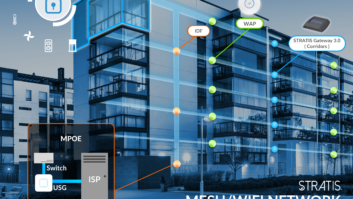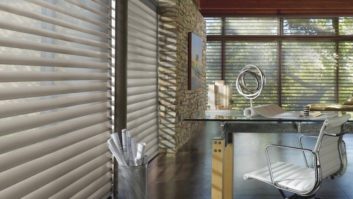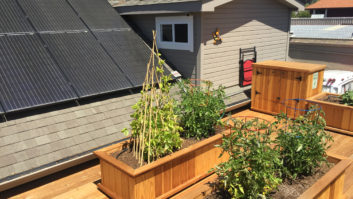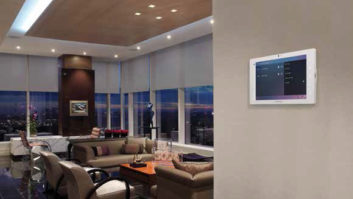As custom electronic integrators, we are very familiar with the convenience and power of total home control solutions from Control4, Crestron, Savant, Elan, and others to provide touchscreen control and automation of integrated whole house audio/video, lighting, and security systems. All of these solutions make the homes of our clients more enjoyable, comfortable, and secure places in which to live. But a new integrated home automation solution is on the horizon that will give our companies the opportunity to make the world a better place in which to live.
We are on the cusp of using our current home automation systems as total home energy management systems. The intelligence of these home controllers, coupled with the systems they control, will allow us to maximize the energy efficiency of the electrical usage in the home while minimizing peak load demand from the utilities.
Here is an example. Let’s say that we have installed the following intelligent, networked products in our client’s home:
- Centralized lighting
- Intelligent skylights
- Intelligent ceiling fan
- Motorized shades
- Intelligent thermostat
With this infrastructure in place, we can leverage the intelligence of our total home control automation system to program a scene that provides cooling to the home at a preset temperature in the following order – before turning on the air-conditioner:
- Open up the skylights to release hot ceiling air
- Turn on ceiling fans to promote convection cooling
- Close window shades on south facing walls to reduce incoming solar radiation
These actions will delay the time it takes to trigger on the air conditioner at a given temperature. This solution reduces the overall electrical needs of the home, but doesn’t do much to reduce the electrical peak utility loads during warm summer months. However, the addition of a solar panel array and an intelligent storage system can dramatically reduce the overall cost of electricity to the homeowner while time-shifting the electrical demand from the utility.
Here is an example of how this integrated system would work:
The home automation control system, in conjunction with “the home’s smart load data,” predicts a relatively high day and night time AC load, while conversely predicting lower than average solar energy generation during the day.
The previous night (from 2:00 am – 5:00 am when the electrical rates are at their lowest point), the home automation system charges the solar battery to 50 percent from the grid in order to ensure that the battery will be fully charged for the next day’s peak loads by storing sunlight in the battery’s remaining 50 percent capacity.
The home automation system deploys demand control “load shedding” during the peak daytime and early evening hours by turning on the AC management scene described previously and by turning off all other un-necessary loads until the lower cost evening electrical rates are available. The result is that the electrical peak period is satisfied by stored sunlight and low carbon footprint grid energy.
The home automation controller’s knowledge of the state of all the electrical subsystems of the home, coupled with weather intelligence, peak and off-peak rate costs, and battery storage levels allows the homeowner to optimize the home’s comfort level while minimizing their electrical costs and their energy footprint.
Here is another scenario where a solar battery can serve as intelligent whole house UPS:
A power outage occurs; the smart energy storage system forms a microgrid and wakes up the PV inverter. The initiation of the microgrid energizes the minimum number of loads based on information from the home’s total home control processor and offers the following “backup configuration options” to the customer as a function of the predicted solar forecast:
- Backup a few loads for a long period of time
- Backup of a medium number of loads for a moderate length of time
- Backup of a larger number of loads for a short period of time
After a choice is made, the home automation system communicates directly to the smart load controller, resulting in specific loads to remain energized or to be turned off.
At cyberManor, we have recently built a 1000-square-foot showcase townhome with the following subsystems in place to fully test a number of these energy management, carbon footprint reduction scenarios:
- TiGo Solar PhotoVoltaic Panels
- sonnen EcoLinx Battery
- Lutron Motorized Shades
- Haiku Smart Fan
- Ecobee Thermostat
- Velux Solar Skylights
- Hibersense Intelligent Floor Registers
- Control4 Centralized Lighting and Control Processor
In a future column I will cover the results of our energy testing over the next several summer months. Our goal is to give our clients one more great reason to add a home automation control system to the integrated, networked electronic solutions that we now provide. Stay charged to read the results of our testing in the coming months!







